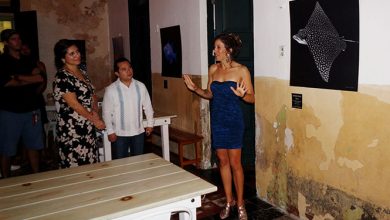The Tradition of the Day of the Dead
The first two days of November are a time when people in Mexico remember their relatives by visiting cemeteries and leaving out food for their spirits

The month of November is here once again, and with it brings one of the most beautiful and colorful traditions of Mexico: the “Day of the Dead”.
 On November 1 and 2, people are accustomed to visiting cemeteries to remember their relatives. They bring flowers, clean the graves, some even remove and clean the bones. There are those who even take the person’s favorite food and even spend the night sitting by candlelight.
On November 1 and 2, people are accustomed to visiting cemeteries to remember their relatives. They bring flowers, clean the graves, some even remove and clean the bones. There are those who even take the person’s favorite food and even spend the night sitting by candlelight.
It is because of this custom that in schools, public squares and some houses all over the country, people leave offerings or create their altar for the dead. They place the elements that drive the tradition: flowers of cempoaxóchitl (or cempazúchitl), chopped paper of colors, veilers, typical food such as mole, a brandy, pumpkin in piloncillo honey, and seasonal fruit. They also place elements with a particular meaning, like a glass of water and a cross made of salt or ash.
You can’t miss out eating a pan de muertos (bread of the dead) with your favorite sweet atole or chocolate. It is also common to have a rug with images of allusive figures in colored sawdust and a path of candles. This signals the passageway to the souls of whom they are the guest of honor.
An essential food and symbolic element are delicious and warm tamales. They are of great significance because they are made from maize – the main cultural and nutritional element of the Mesoamerican peoples – and wrapped in leaves like a shroud. They represent burial and rebirth: the duality of the cosmovision for the Maya, Aztec and other pre-hispanic cultures of Mexico.
But where does this tradition come from?
In pre-hispanic Mexico, this culture was given to the dead. With the arrival of the Spanish there was a fusion with the Catholic cultures, merging the November 2 with All Saint’s Day. Out of these cultures came new customs and traditions.
We are celebrating this tradition on November 1 and 2 with a monumental contest in Plaza 28 de Julio. You are cordially invited!







